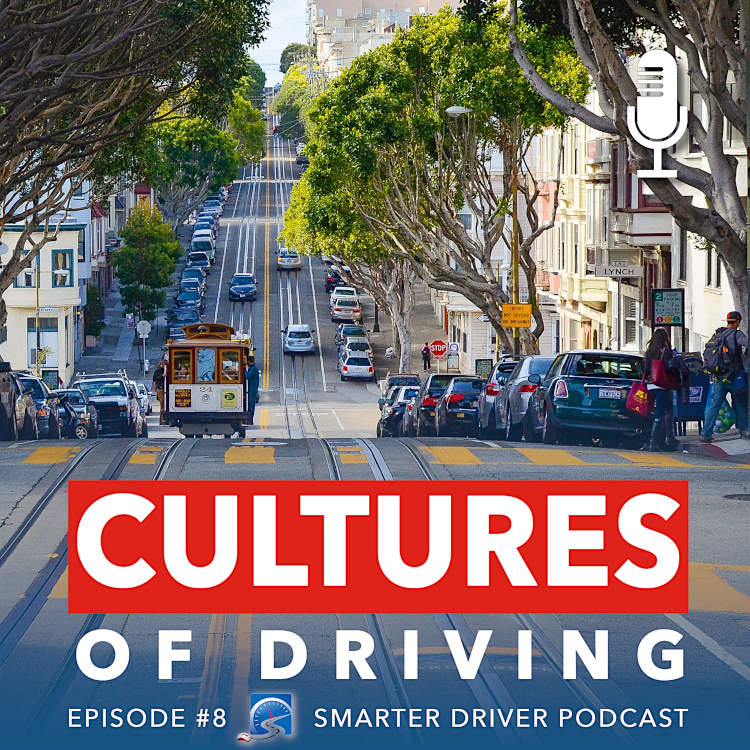
Driving Cultures
Is It More Difficult to Drive in Other Places?
Many drivers feel that their city is the worse for drivers and driving culture.
There’s road rage, people cut you off, and of course they don’t signal.
Pass Your Driving Test First Time Course Package: https://www.smartdrivetest.com/new-drivers/smarter-driver-course-package
Pre-Trip Inspection Checklist: https://www.smartdrivetest.com/driving-test-inspection-checklist
Smart Drive Test YouTube: www.youtube.com/c/smartdrivetest
Website: https://www.smartdrivetest.com
In a Smart Drive Test poll done on 10 June 2022, less than 20% of drivers have driven in other countries.
And from that information, it’s posited that most have a limited view of driving.
But the question remains, is it more difficult to drive in other places.
And yes, places like India and China, that don’t have well established traffic management systems, are going to be more challenging.
But the differences between Europe and North America are minimal.
Roundabouts
A number of Americans and Canadians don’t like roundabouts.
One could surmise that it’s due to the fact that these were introduced without any education about how to use these.
Roundabouts are better than conventional intersections.
These types of intersections:
- Move more traffic per hours;
- Have less points of conflict, thus fewer crashes;
- Reduce urban noise pollution.
And yes, the first few times you drive through a roundabout can be intimidating.
If the way is clear in the roundabout, you don’t have to stop and can simply proceed.
Or the unvitiated, you have to be both prepared to stop and proceed when approaching the roundabout.
There are some multi-lane roundabouts in North America, but for the most part these are not yet widely accepted.
If you do encounter a multi-lane roundabout, stay in your lane when entering the roundabout, and when exiting.
Be sure to scan and signal when exiting to reduce the chances of other traffic crashing into you.
When the round about in congested, go slow and hold your course.
Driving on the Left Side
Smarter Driver Redmesa29 commented:
Years ago I was a transit bus mechanic near Vail Colorado.
We would have Aussie & Kiwi seasonal drivers come in for the winter.
I asked a driver how they were able to drive here considering they drive on the opposite side of the road there.
He said, just remember in the US & Down Under the driver sits towards the center of the road.
And he is absolutely correct.
Relatively speaking you are still sitting in the same position on the roadway.
And the pedals on a right-hand drive are the same as in a left-hand drive.
Depending on the brand of vehicle you’re driving, the only thing that might be a bit different, is that the signals and wipers are on the opposite sides of the steering wheel.
And of course, if you’re driving a manual transmission, you’ll be shifting the transmission with your left hand – which isn’t has tough as you might think.
For those coming from countries where they drive on the right, you’re more in danger as a pedestrian, and cyclist or a motorcycle rider.
And because of this danger, the streets of London, England have “Look Right” painted on the roadway at intersections to ensure that pedestrians look the correct way before stepping out into the roadway.
Freeways & Motorways
Motorways and freeways are the same the world over.
In their truest form, freeways are called “limited access highways.”
There are only certain points where you can get on and off the freeway.
And these on- and off-ramps lanes are separated by continuity lines.
In other words, there aren’t any conventional intersections.
Only motorized vehicles travelling at the posted speed limit are allowed.
There aren’t farm tractors, industrial equipment, cyclists or pedestrians along these roadways.
And traffic is travelling in the same direction, which significantly reduces the severity of car crashes.
On freeways and motorways, manage space well.
Have a following distance of 4-6 seconds.
And if there are more than 2 lanes, travel in the middle lane, or first lane left of the right-most lane for your best defensive posturing.
Right-of-Way is Never Taken
You can be right, or you can be dead-right.
The right-of-way is never taken, it’s always given.
No matter where you go, no matter what you do, always give others the right of way if they’re intersecting with your path of travel.
When moving through crowded intersections or roundabouts, and another driver or rider wants over, let off the gas and allow the other vehicle to move sideways.
Is a few seconds of your time worth risking a crash.
Not to mention the time, energy and money that goes into the post-crash clean up.
And that’s if you’re lucky enough to escape the collision without any injuries or hospital time.
In the post-crash world, there will most likely be a time where you’re without your vehicle.
Without your vehicle you’ll have to arrange alternative forms of transportation.
And of course, shoulder checking and signaling every time you change direction of the vehicle.
